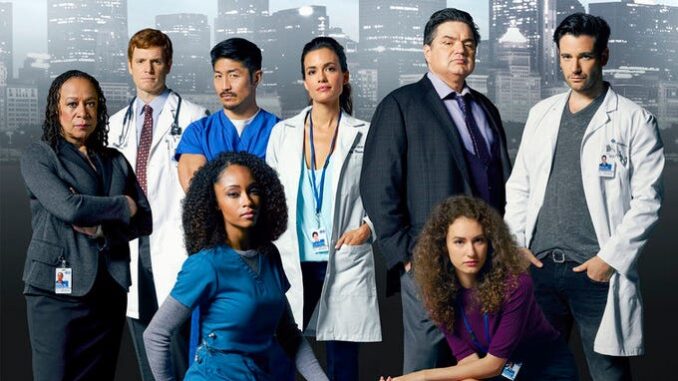
The television landscape, particularly the sprawling, interconnected world of the "One Chicago" universe, thrives on the subtle art of the tease. It’s a whisper from the lips of an actor, a flicker of an image in a promo, a cryptic tweet – and suddenly, a quiet corner of the internet explodes into a cacophony of speculation, hope, and fervent discussion. This precisely describes the ripple effect initiated by Torrey DeVitto’s recent hint at a possible return to Chicago Med for a crossover episode. It wasn't a definitive announcement, nor a detailed plot leak; it was merely a tantalizing suggestion, yet its power to ignite the collective imagination of a devoted fanbase is illustrative of the enduring allure of serialized storytelling and the magic of shared universes.
At the heart of this particular tremor is Dr. Natalie Manning, a character whose tenure on Chicago Med was marked by both profound empathy and complex personal struggles. Played by DeVitto with a nuanced blend of vulnerability and fierce dedication, Natalie was a cornerstone of Gaffney Chicago Medical Center’s emergency department for six seasons. Her departure left a palpable void, a lingering question mark over several unresolved storylines and relationships, particularly her tumultuous romance with Dr. Will Halstead. For fans who invested years in her journey, the quiet, yet palpable, ache of her absence has been a constant hum. Thus, the very mention of her name, linked to the possibility of stepping back into the halls she once called home, transforms from a mere piece of news into a beacon of potential narrative closure or, perhaps, a fresh wave of dramatic upheaval.
Beyond the immediate thrill of seeing a beloved character potentially return, DeVitto’s tease taps into the fundamental appeal of the crossover event, a mechanism that Dick Wolf’s franchises have perfected into an art form. Crossovers are the alchemical magic of shared universes, allowing characters from Chicago Med, Chicago Fire, and Chicago P.D. to bleed into each other's narratives, creating a richer, more expansive world. They offer the tantalizing promise of two worlds colliding, not just for a fleeting cameo, but often to propel major plotlines, provide unexpected character interactions, or resolve long-standing mysteries. A Chicago Med crossover featuring Natalie Manning isn't just a nostalgic nod; it’s a potential weaving of old threads with new, a chance to see how the landscape of the hospital – and the lives of her former colleagues – has shifted in her absence, and how her re-entry, however brief, might ripple through the established order.
The beauty of a "tease" lies in its ambiguity, leaving a fertile ground for fan theories to blossom. What form would Natalie’s return take? Would she be called in for a unique medical case requiring her specific expertise, perhaps involving a character from Fire or P.D.? Could it be a personal crisis, a plea for help from a friend, or an unexpected encounter that forces her back into the orbit of her past life? The digital echo chambers of fandom ignite with "what ifs," each theory a testament to the audience's deep investment in these characters and their world. This collective act of speculation, fueled by a single, carefully dropped hint, transforms passive viewing into an active, communal narrative experience, keeping the show alive and vibrant even between episodes.
Ultimately, Torrey DeVitto’s teasing whisper about a possible Chicago Med crossover episode featuring Dr. Natalie Manning is more than just a potential plot point; it’s a powerful illustration of the dynamic relationship between creator and audience. It speaks to the enduring legacy of well-crafted characters, the inherent excitement of interconnected storytelling, and the unique way in which a single, tantalizing hint can spark a wildfire of anticipation. In a world saturated with content, these carefully orchestrated glimpses behind the curtain serve as a reminder that the most compelling narratives are often those that leave just enough space for imagination to take flight, keeping us perpetually on the edge of our seats, eagerly awaiting the next chapter.
